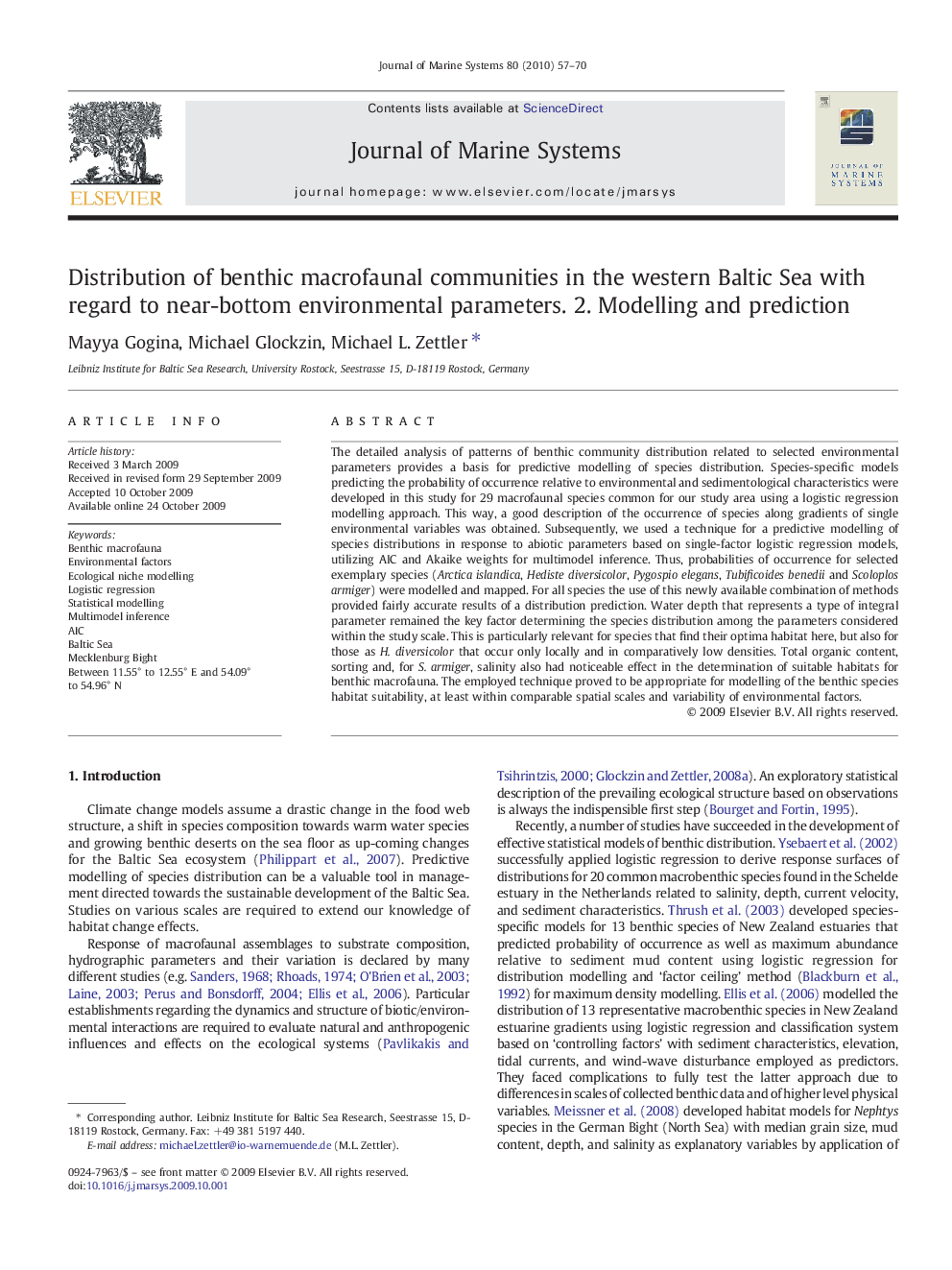| Article ID | Journal | Published Year | Pages | File Type |
|---|---|---|---|---|
| 4548645 | Journal of Marine Systems | 2010 | 14 Pages |
The detailed analysis of patterns of benthic community distribution related to selected environmental parameters provides a basis for predictive modelling of species distribution. Species-specific models predicting the probability of occurrence relative to environmental and sedimentological characteristics were developed in this study for 29 macrofaunal species common for our study area using a logistic regression modelling approach. This way, a good description of the occurrence of species along gradients of single environmental variables was obtained. Subsequently, we used a technique for a predictive modelling of species distributions in response to abiotic parameters based on single-factor logistic regression models, utilizing AIC and Akaike weights for multimodel inference. Thus, probabilities of occurrence for selected exemplary species (Arctica islandica, Hediste diversicolor, Pygospio elegans, Tubificoides benedii and Scoloplos armiger) were modelled and mapped. For all species the use of this newly available combination of methods provided fairly accurate results of a distribution prediction. Water depth that represents a type of integral parameter remained the key factor determining the species distribution among the parameters considered within the study scale. This is particularly relevant for species that find their optima habitat here, but also for those as H. diversicolor that occur only locally and in comparatively low densities. Total organic content, sorting and, for S. armiger, salinity also had noticeable effect in the determination of suitable habitats for benthic macrofauna. The employed technique proved to be appropriate for modelling of the benthic species habitat suitability, at least within comparable spatial scales and variability of environmental factors.
